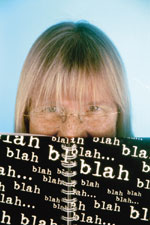MEMOIR
Hanging Rock
by Phyl Lobl
My father Roy Thomas Vinnicombe joined the 1st AIF when he was 18 and served on the Somme. He was injured three times but returned home to live near Romsey in Victoria.
He met my mother who lived nearby at Monument Creek. They married and had six surviving children.
The family was living in Ballarat when Roy re-joined 2nd AIF circa 1940.
This meant a move from Ballarat to Gisborne to a farm that belonged to my Uncle Stan who was Captured at the Fall Of Singapore and died when the Japanese Prison ship he was on was bombed by the Americans. This tragedy meant a move to another uncle’s farm at Newham.
When my family lived at Newham it was a small hamlet. It still is.
It had been larger and my forebears had run a bacon factory there at one time. It seems there had also been a hotel and a flour mill.
In the 1940’s Newham had a General Store/Post Office, a Primary school,
two churches and a Mechanics Institute Hall.

One church was stone-built and Presbyterian. This is not surprising as the area had been settled by Scottish farmers. We attended Sunday School on there Sunday mornings. Although it was not my inherited Methodist religion it was apparently close enough for Sunday School. My memory of the Sunday School is the small illustrated paper texts we were given to memorise each week.
On Sunday afternoons we attended the plain little wooden Methodist church I imagine Methodist sermons were required to contain a stronger strain of Wesleyan thought than the ‘kidstuff’ of Sunday School.
My memory of the Methodist church was not the sermons but the sun shining on large purple grapes that decorated the organist’s hat. They shone and glowed so richly I could not stop looking at them. I can’t quite understand why that is my main memory. I don’t really like the colour purple.
The Hall was used for community happenings.
We attended Fetes, concerts, dances, Harvest Thanksgivings and in wartime farewells to soldiers who were off to the war.
At these functions there was dancing, singing and war-time coffee made from Coffee mixed with Chickory Root and much overheated milk.
The churches were used to pray for the safe return of the soldiers.
Sadly there were more farewells than celebrations of homecomings.
The golden names on the honour rolls in the hall are testament to those figures. Perhaps too a cause for a lessening of faith in prayer.
A few years ago I went back and sang my song ‘Derby Hall” on the stage to an audience of nil humans but no doubt a community of insects. It felt good to do that. It is a song written because it mirrors my memories of events in Newham Hall with events held in Derby Hall in Tasmania where I was involved in a Tasmanian Arts project. I’m certain it mirrors events held in hundreds of small community halls all over Australia
Newham lies at the base of the geological formation known to the world as Hanging Rock, made famous by the film ‘Picnic At Hanging Rock’.
But to us it was just The Rock as distinct from other geological formations of the area The Monument, the Camel’s Hump, and Mt Jim Jim, which we just called The Jim.
The geological name for the Rock is a ‘mamelon’ created by volcanic eruption it is situated in the area of the Wurundjeri people.
It has one Aboriginal name Anneyelong and six European names.
Mount Diogenes, Diogenes’ Head, Diogenes Monument, Dryden’s Rock, Dryden’s Monument and Hanging Rock have been recorded as names for the site. The name Mt Diogenes was given by the explorer Robert Hoddle. I was puzzled why he picked the name of a Cynical Greek Philosopher from Sinope until I discovered Diogenes Of Oinoanda who was a philosopher of higher quality thought. I would like to know why he picked the name of either.
For us and many other families the Rock was a place for picnics.
Family picnics and the larger occasions of Family Reunions.*
The entrance to the Rock gave a clue to it’s past. The large gates had a faded grandeur. Huge balls, streaked with age, sat atop the side pillars of the imposing, senescent gates. As the car rolled through you fancied you were time – traveling to the past.
Such entrances came about perhaps because the Rock boasted a small Racecourse. ‘The first official race meeting was held at Hanging Rock on New Years Day 1886, however thoroughbred racing has been taking place at the base of the Rock on an unofficial basis from at least the 1870’s and probably earlier.’ Two special race meetings, one held on New Years Day and one on Australia Day, made the Rock a play-place of the rich and the notable of the late 1800’s.
These race meetings were frequented by many of Victoria’s wealthiest families who owned country properties on Mt Macedon for city escapes.
The early race meetings there became society occasions.
An expensive boarding school for girls called Clyde was situated part-way up Mount Macedon. It was a school my mother would say was for ‘the higher ups’. She did not mean because of the altitude.
There was talk that a student from Clyde school had gone missing at The Rock. This story was mostly spoken of in whispers. In the same way we found that Ned Kelly and Eureka Stockade were not topics my Mother wanted discussed.
My own experience of Clyde was as a student at Kyneton High School and being taken there to play a Hockey Match on their beautiful, manicured hockey field circled by tall sweet-smelling eucalypts. Our own relatively respectable but pretty rough field was far outshone for quality-of surface points. I experienced envy.
For afternoon tea we were given arrowroot biscuits in the Junior Common Room. A year later I went back with a hockey team from Bendigo Teachers’ College. We were given cream biscuits in the senior Common Room.
The rarified atmosphere of close-by wealth, the history and the mystery gave a Picnic at The Rock a feeling we were on ‘special ground’.
The bush that clothed the bottom regions was quite thick and gave a sombre atmosphere to the place. The sober sense was accentuated if one thought about the stories of the missing girl of years ago and of the more recent reported suicides.
When we arrived for a picnic the women unpacked the fruits of their cooking. The men talked, probably farm talk.
The big kids climbed the Rock,vying to be first to the top.
Steps built into the towering edifice of volcanic boulders made it quite easy to climb. Twenty minutes ample time for the young and the fit. Younger kids had to wait until after lunch and go with adults.
A short way up and you had to pass under the huge Hanging Rock. To an imaginative ‘worrywart’ like me it was a relief to get up and down without that huge rock falling on someone.
Near the ‘namesake stone’ was a narrow entrance to a small cave. It was easy to imagine it could contain bones.
Halfway up was a plateau with an amphitheatre which gave grand views across numbers of properties and small settlements.
I’ve always preferred horizons to caves.
Further up many odd shaped rock formations had the imagination working overtime on possible other forms these rocks could take if there was such a thing as a ‘witching hour’.
When I was an adult I went back to the Rock alone.
It was a week day and there were no people around.
Not one.
I climbed The Rock.
I went as far as the plateau.
Why was I so glad to get back in my car ?
Does childhood fear ever quite disappear ?
*My grandparents celebrated their Golden Wedding at THE ROCK which then became a regular, though not the only site of the Small Newnham Reunion which is the reunion of my Grandparents descendants not to be confused with the BIG NEWNHAM REUNION.The big reunion celebrated the arrival in Australia from Wivelsfield in Sussex of two Newnham Brothers in 1849 and whose descendants met every year in Heidleberg Park.
SEE NEWNHAM REUNION in planned memoir WORKING TITLE – ‘FRIED BREAD AND RABBIT’
